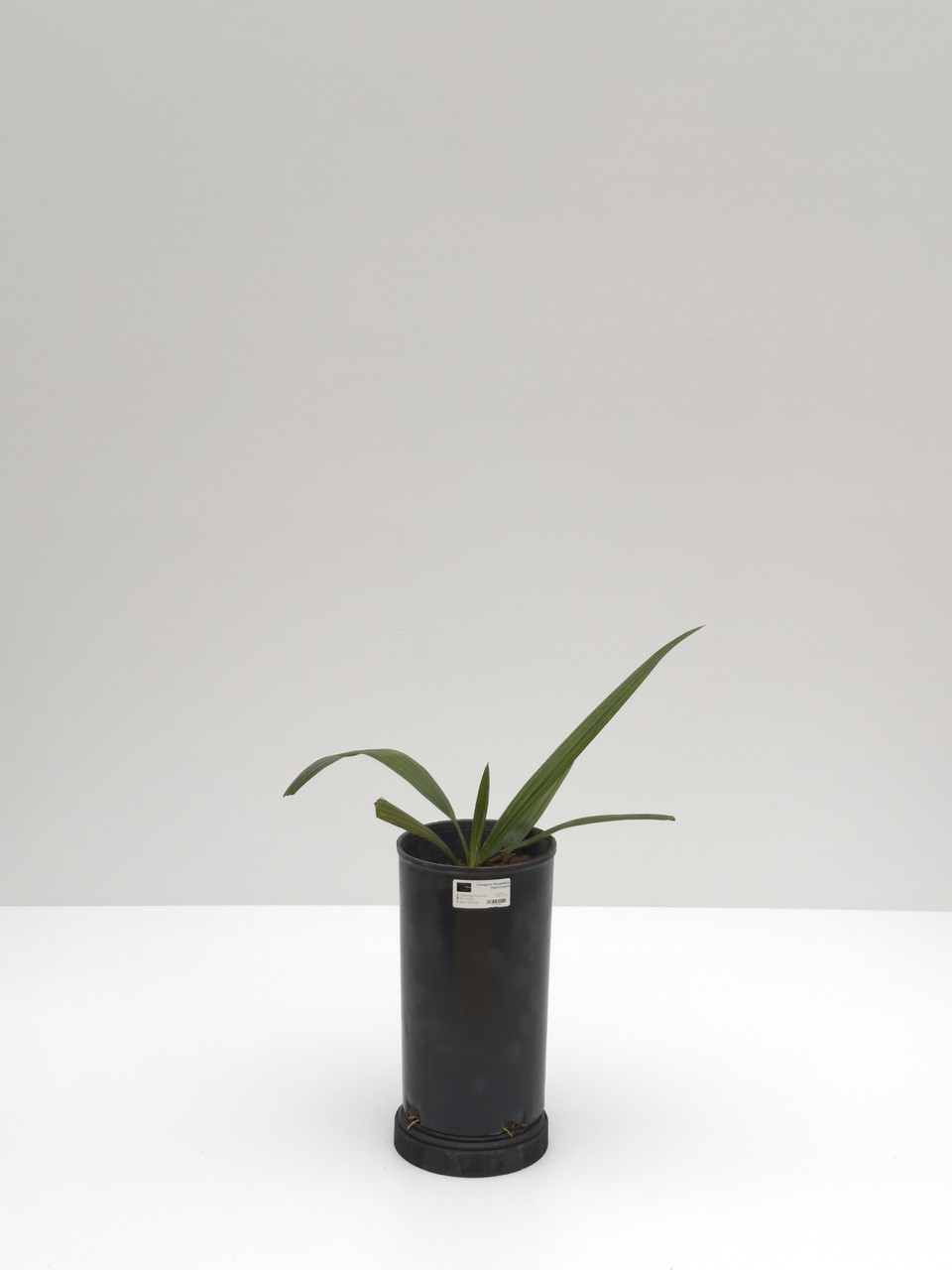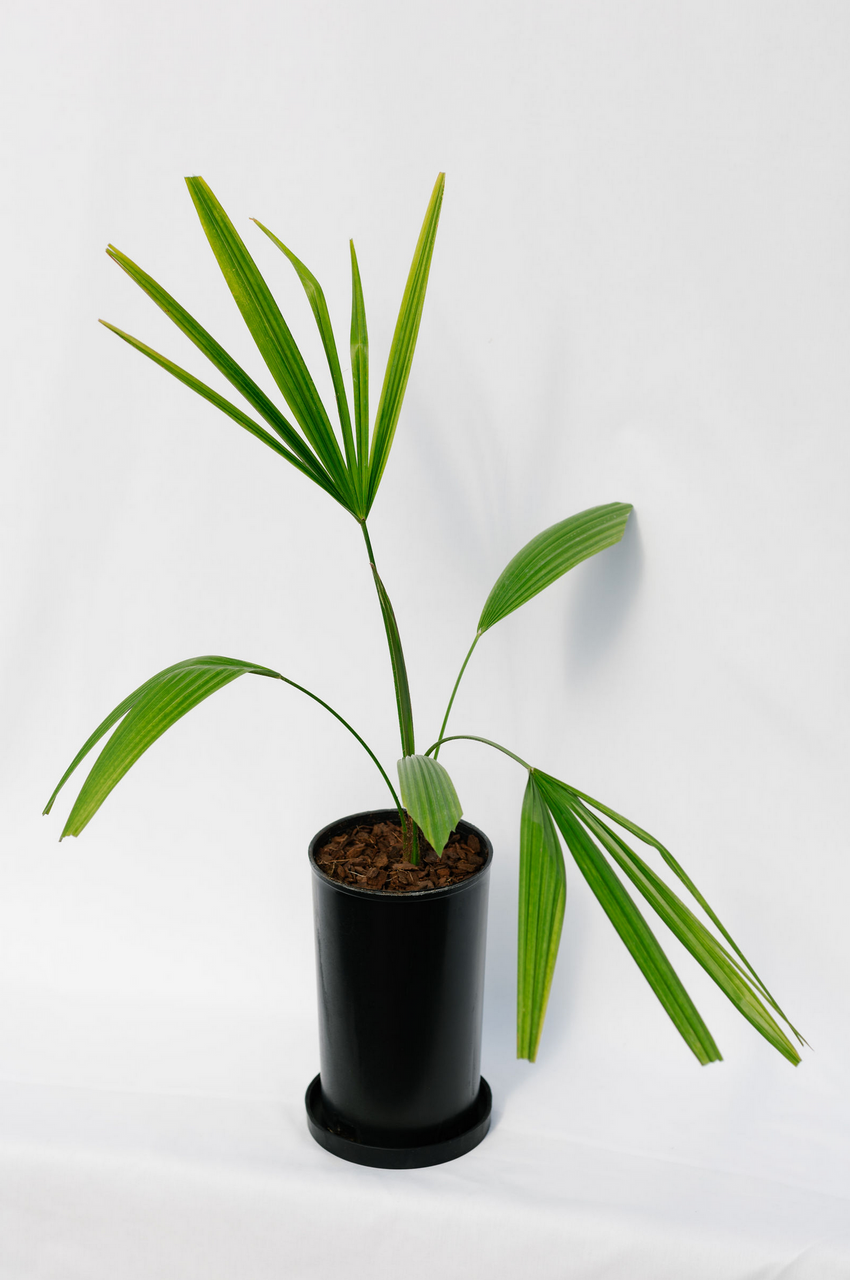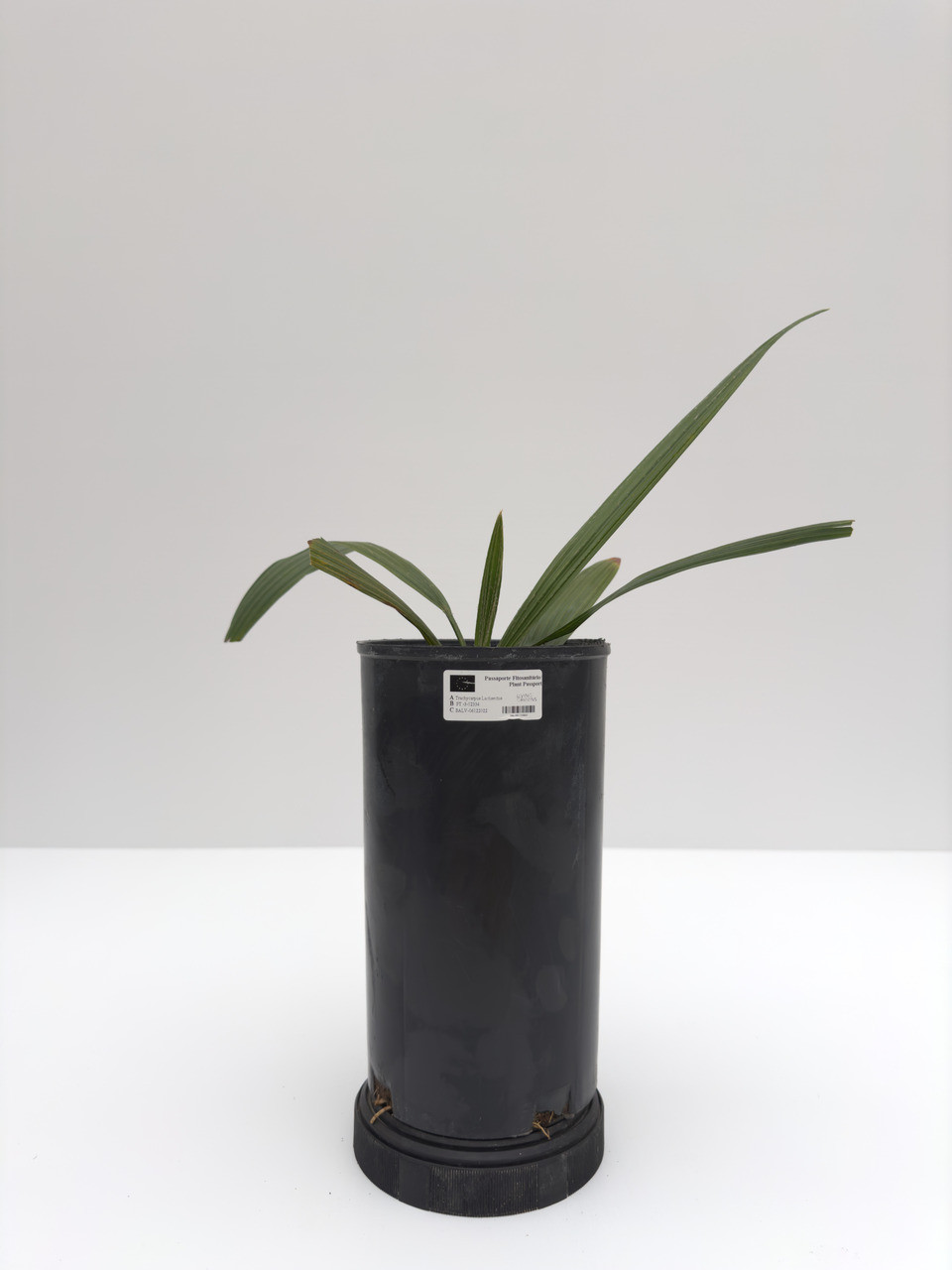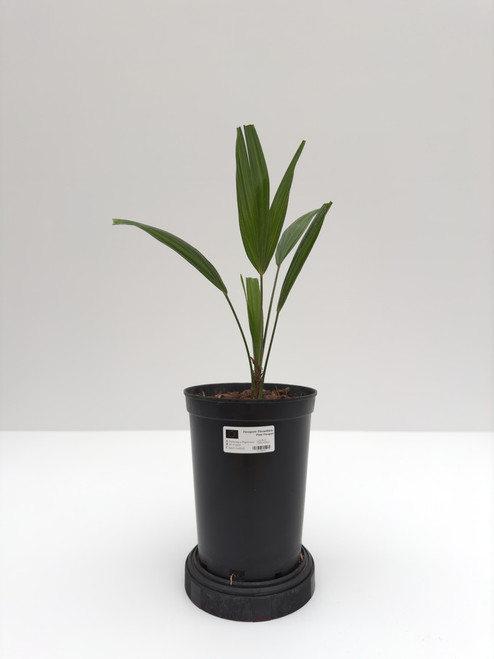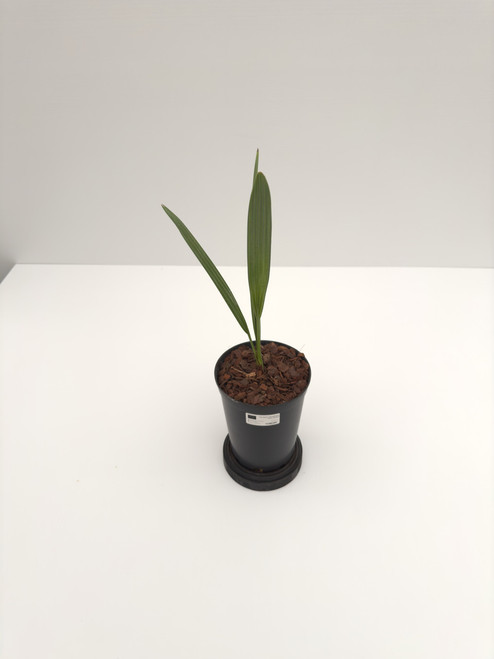Product Description
Habitat and Distribution
Trachycarpus latisectus is found in India: in the foothills of the Sikkim;
Description
This is a moderately tall dioecious palmate species, up to 40'/12m tall and a trunk about 5-6"/15cm in diameter. The leaves of this species tend to be less finely split than most other Trachycarpus, and are a slightly lighter green.
Solitary, unarmed, dioecious fan palm to about 12 m tall; trunk slender, erect, bare, light grey, obscurely ringed, (10-) 14-17 cm diameter, clothed in persistent, fibrous leaf-sheaths for 0.6-2 m below the crown. Leaves (8-) 15-25, forming an erect, open ciown, some leaves reflexed, marcescent leaves numerous, forming a small skirt below the crown; leaf-sheath fibrous, 3O cm long or more, coarse, abaxial surface covered in pale tomentum, broadly triangular towards the apex, not breaking down into threads; petiole (50-) 120-140 cm, slender (about 2.5 cm. wide and 1.2 cm high near the middle), flat above, slightly keeled towards the leaf-blade, broadly triangular to rounded beneath, margins smooth sharp-edged base very thick and robust, about 3.8 cm wide and 2 cm high, covered in pale tomentum; hastula less than 1 cm long, broadly triangular, slightly crested; leaf-blade palmate, 3/4 to completely orbicular, 65-85 cm long from hastula, 110-135 cm wide, leathery, dark green above, with thin whitish tomentum along the folds, slightly glaucous beneath, with clearly visible cross veinlets, nearly regularly divided for less than half its length into 65-75 stiff, linear segments with two inconspicuous longitudinal folds on either side of the midrib, tapering towards the apex from their broadest point, arranged at slightly differing angles, producing a slightly convoluted leaf profile; central segments 65-80 cm long 3.5-5 cm wide at middle, with a prominent midrib beneath, lateral segments gradually more narrow and shorter, to about 2l-45 cm long and 1 cm wide, the more lateral segments joined for nearly the entire length in groups of 2-4, apex of central segments acute, notched, of lateral segments acuminate, bifid for 1-3 cm. Inflorescence's 3-6, solitary, interfoliar, branched to three orders. Male inflorescence 60-100 cm long, spreading; peduncle short; prophyll two-keeled, apex acute; peduncular bract single, keeled, base tubular, inflated distally, about 7 cm wide in the distal portion, apex acuminate; rachis bracts 3, similar to peduncular bracts; rachillae short, about 2 mm diameter, yellowish; flowers globose,2.5-3 mm diameter, yellowish, arranged in groups of 2-4 on short pedicels; sepals ovate-triangular, joined into a fleshy base for lower l/4; petals nearly orbicular, minutely triangular-tipped, 3 times as long as sepals; stamens 6, slightly exceeding petals; filaments ventricose; anthers broadly ovate-sagittate, blunt; pistillodes less than half the length of the stamens. Female inflorescence 100-150 cm long, stiff, spreading; peduncle about 50 cm long, oval in cross section, 4.2 cm wide, 1.8 cm high; prophyll two.keeled, about 30 cm long, apex acute; peduncular bracts 2, keeled long, tubular, about 4.5 cm wide. apex acuminate; rachis bracts 3, similar to peduncular bracts; rachillae 5-8 cm long, 1-2 mm in diameter, yellowish-green (in fruit); flowers globose; about 1.5 mm in diameter, yellowish, usually in pairs, subsessile, sepals briefly connate into a distinctly swollen base; petals oblong-orbicular, twice as long as sepals; staminodes 6, slightly exceeding petals; carpels with a very shdrt, conical style, stigma punctiform. Fruit shortly stalked, oblong-ellipsoid, flattened on one side, 16-18 mm long, 1l-13 mm wide; epicarp thin, yellowish-brown when ripe, turning bluishblack; mesocarp thin, fibrous; seed oval-oblong, flattened or shallowly depressed and grooved on one side, 13-16 mm long, 8.5-11 mm wide; endocarp very thin, with a crustaceous sand-like layer of light brown, small, irregurlar scales; endosperm homogeneous with a deep, lateral intrusion. Germination remote-tubular, eophyll simple, plicate, to 2 cm wide, glabrous. (M. Gibbons. 1998)/Palmweb. Editing by edric.
Culture
Since it is from a rainforest area in India, it is suspected to have the most tolerance for a subtropical climate relative to the other Trachycarpus species. Whether true or not, it certainly does not have an impressive tolerance of frost (defoliated as a young palm at just 27F/-2.7C). It does seem to withstand inland Mediterranean dry heat but it's leaves do blanch a bit in very hot, dry weather. This palm seems much happier with some shade/protection in dry, Mediterranean climates. It is a moderately slow growing species, at least compared to most other Trachycarpus species. It responds well to heavy watering, and fertilization, and does not appreciate drought conditions.

